-
Feds give Colorado access to critical infrastructure info
The Homeland Security Infrastructure Program (HSIP) compiles about 500 layers of geographic features, including power plants and water pumps; it is managed by DHS, the Pentagon’s National Geospatial Intelligence Agency, and the U.S. Geological Survey; the data set is available to state first responders only when federal disasters are declared; DHS has now given Colorado access to the HSIP
-
-
Clay-based coating holds promise of green flame retardants
The thick, fast-forming coating has a uniformly high concentration of flame-inhibiting clay particles, and it adheres strongly to the Swiss cheese-like surface of polyurethane foam, which is used in furniture cushions, carpet padding, children’s car seats, and other items
-
-
Container ships as offshore platforms for direct support to disaster zones
DARPA’s Tactically Expandable Maritime Platform (TEMP) program has completed the design of technologies to transform commercial container ships into self-contained floating supply bases during disaster relief operations, without needing port infrastructure
-
-
Seismic sensors seek source of Spokane quakes
It has been a decade since a swarm of relatively mild earthquakes shook up parts of Spokane, Washington; now, armed with the right tools, scientists want to find out what was at fault
-
-
Mega-quake hotspots around the world
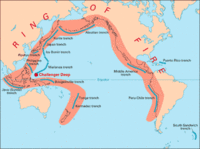
The 2010 earthquake in Haiti killed hundreds of thousands and destroyed large sections of the capital, Port au Prince; the clock is ticking on many earthquake faults throughout the world, and a comprehensive new book points to places around the world that could face the fate of Port au Prince
-
-
Greater L.A. to heat up an average 4 to 5 degrees by mid-century
A groundbreaking new study shows that temperatures in the Los Angeles region to rise by an average of 4 to 5 degrees Fahrenheit by the middle of this century, tripling the number of extremely hot days in the downtown area and quadrupling the number in the valleys and at high elevations
-
-
Significant sea-level rise in a 2-degree warming world
Sea levels around the world can be expected to rise by several meters in coming centuries, if global warming carries on; even if global warming is limited to 2 degrees Celsius, global-mean sea level could continue to rise, reaching between 1.5 and 4 meters above present-day levels by the year 2300
-
-
Finding the best ways to protect infrastructure, recover from disasters
Researchers at Sandia National Lab bring the quantitative methods they have developed to the analysis of disasters and how best to recover from them; the researchers look at interdependencies among systems and supply chains, the resilience of various systems, how infrastructure systems fail, cascading effects, and how results might differ if a series of disasters hits instead of just one; the Sandia researchers say they can better quantify the results of such resiliency studies by taking a mathematically rigorous approach to objective assessments
-
-
California coastal infrastructure at risk from rising sea levels
An exhaustive study by the National research Council finds projects that the sea level off most of California is likely to rise about one meter over the next century, an amount slightly higher than projected for global sea levels; this will place much of the state coastal infrastructure at risk, because significant development along the coast — such as airports, naval air stations, freeways, sports stadiums, and housing developments — has been built only a few feet above the highest tides; for example, the San Francisco International Airport could flood with as little as 40 centimeters of sea-level rise
-
-
Seeping Arctic methane to pose serious problems for Florida coastline
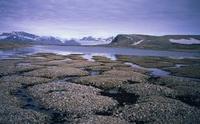
Large quantities of methane gas are buried under the Arctic permafrost; the melting of ice caps in the Arctic causes this gas to escape into the atmosphere through vents; until recently, cryosphere (frozen soil and ice) has served to plug or block these vents, but thawing conditions have allowed the conduits to open, and deep geologic methane now escapes; methane is a very strong greenhouse gas, and its presence in the atmosphere has grown three times faster than carbon dioxide since the industrial era
-
-
Top 5 critical hurricane preparedness actions
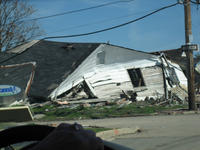
The National Center for Disaster Preparedness (NCDP) at Columbia University reminds Americans that hurricane preparedness lasts all season — from June to November — and that emergency preparedness is a year-round proposition, because emergencies do not have a season
-
-
Mobile data used to predict population displacement during disasters
Using data supplied by a mobile operator, researchers have shown that population movements after the 2010 Haiti earthquake followed regular patterns; this information can be used to predict beforehand the movements of people after a disaster, and thus improves chances for aid to be delivered to the right places at the right time
-
-
New research into flood impacts in the South of England -
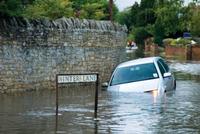
Researchers have developed and applied a method for understanding the effects and impacts of coastal flooding across the south coast of the United Kingdom, which could contribute to more effective flood forecasting, defense design, and land use planning
-
-
Laser beams shine light on nature’s extreme events
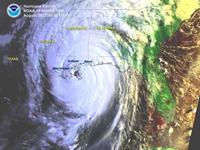
“Extreme” events in nature, such as hurricanes, tsunamis and bushfires, may be more commonplace and predictable than you might think; researchers are using lasers to study how frequently extreme events happen, and their work highlights that in nature, “extreme” does not have to mean “rare”
-
-
New Red Cross first aid app brings safety tips to smart phones
The American Red Cross today (Wednesday) launched its official first aid app, putting free lifesaving information in the hands of smart phone users. The Red Cross says this app is the first in a series to be created by the organization
-
More headlines
The long view
The Surprising Reasons Floods and Other Disasters Are Deadlier at Night
It’s not just that it’s dark and people are asleep. Urban sprawl, confirmation bias, and other factors can play a role.
Why Flash Flood Warnings Will Continue to Go Unheeded
Experts say local education and community support are key to conveying risk.
